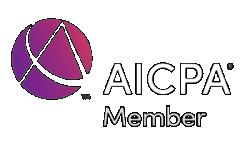As the end of the tax year approaches, it’s essential to take proactive steps to minimize your tax liability and potentially save on your tax bill. This year-end tax planning checklist will guide you through key actions to consider before December 31st to ensure you’re making the most of available tax-saving opportunities.
1. Review Your Income and Expenses
Evaluate your current financial situation, including income and expenses, to determine your taxable income for the year.
2. Contribute to Retirement Accounts
Maximize contributions to retirement accounts such as 401(k)s, IRAs, or SEP-IRAs to lower your taxable income and increase your retirement savings.
3. Capital Gains and Losses
Analyze your investment portfolio and consider realizing capital losses to offset capital gains, reducing your overall tax liability.
4. Take Advantage of Tax Credits
Explore available tax credits, such as the Child Tax Credit, Earned Income Tax Credit, or energy-related credits, to reduce your tax bill.
5. Charitable Giving
Consider making charitable contributions before year-end to qualify for deductions, and ensure you have proper documentation for tax purposes.
6. Health Savings Account (HSA) Contributions
If you have an HSA-eligible health plan, maximize your contributions to your Health Savings Account to lower your taxable income.
7. Required Minimum Distributions (RMDs)
Ensure you’re taking the required minimum distributions from your retirement accounts if you’re of the required age to avoid penalties.
8. Evaluate Tax-Efficient Investments
Review your investment portfolio to identify tax-efficient strategies, such as holding onto investments for more than one year to qualify for lower capital gains rates.
9. Flexible Spending Accounts (FSAs)
Utilize funds in your FSA for eligible medical expenses or dependent care before they expire at year-end.
10. Defer Income, If Possible
If you’re self-employed or have flexibility in timing income, consider deferring income into the following year to reduce your current tax burden.
11. Small Business Tax Strategies
Explore small business tax deductions and credits, such as Section 179 depreciation or Research and Development (R&D) tax credits.
12. Document Business Expenses
Ensure you have proper documentation for business expenses, including receipts and mileage logs, to maximize deductions.
13. Consult with a Tax Professional
Finally, consider consulting with a certified public accountant or tax advisor to review your financial situation and get personalized tax planning advice.
Conclusion
Year-end tax planning is a proactive approach to minimize your tax liability and make the most of available tax-saving opportunities. By following this checklist and seeking professional guidance if needed, you can ensure you’re well-prepared for the upcoming tax season and potentially reduce your tax bill significantly. If you require personalized assistance or have complex tax situations, don’t hesitate to contact The Law Offices of Lawrence Israeloff. As an experienced tax professional, I’m here to help you navigate the intricacies of tax planning and ensure you make the most informed decisions for your financial future. Reach out today to schedule a consultation and get started on your path to tax efficiency.





